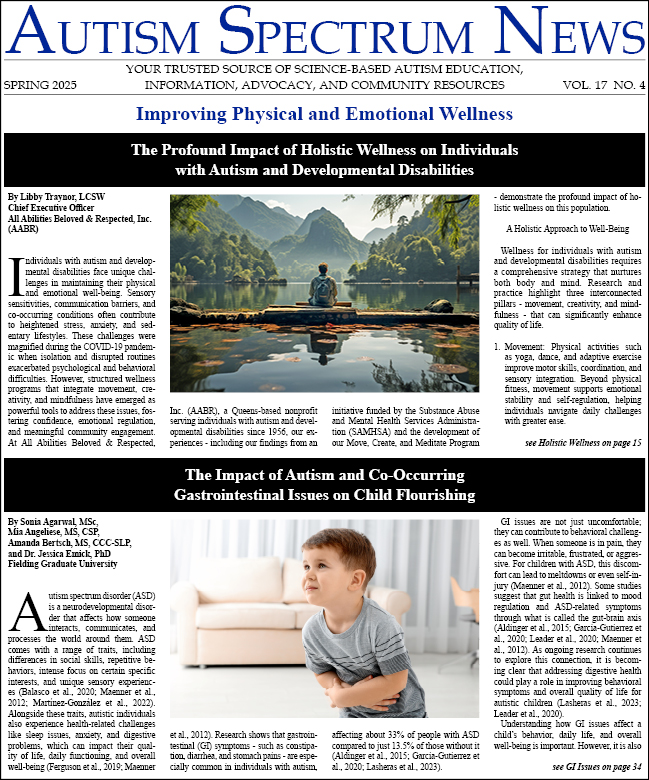-
Establishing Sensory Inclusive Theater Experiences
Many sensory inclusive theaters and performing arts venues have incorporated sensory-friendly (SF) or relaxed performances (RP) to increase access to the arts for all patrons. Often, these events are geared towards children or younger audiences and for individuals who experience hypersensitivity....
-
Harnessing the Power of Nature: Outdoor Sensory Activities for Autistic Children
Holistic health improves when children spend time playing outdoors (Dankiw et al., 2020; Gill, 2015; McQuay et al., 2020; McCormick, 2017). Children with autism spectrum disorder demonstrate increased world connections with outdoor sensory activities, as the natural environment affords more...
-
Meeting the Sensory Needs of Autistic Patients with Dental Care Challenges
Individuals with autism spectrum disorder (ASD) face many dental care challenges. As a result, ASD patients continue to experience obstacles in accessing quality dental care. According to the Centers for Disease Control and Prevention (CDC), about 1 in 36 children in the United States has been...
-
Nurturing Comfort: Sensory Processing Through an Autistic Lens
What grates on your nerves? The slurping sound made by an open-mouthed eater or by someone smacking gum and popping bubbles? What about ticking clocks? Or the coworker who repeatedly clicks their pen, ad nauseam? Why do such noises bother autistic people? Maybe it’s because stimuli and sensory...
-
NYU Libraries Opens Low-Sensory Room for Neurodiverse Students and Others Who Benefit From a Calming Environment
NYU Libraries has opened a low-sensory space on the first floor of Bobst Library, providing students who are neurodiverse with a dedicated room to support their academic success. With the new space, and two more study rooms scheduled to open on the 9th floor in the spring of 2024, Bobst...
-
Sensory Sensitivities, Accommodations, and Technological Solutions
Various organizations and venues have recently provided “autism-friendly” and “sensory-friendly” events. This is certainly a welcome trend because it not only addresses an issue that is nearly universal in the autism community but also helps promote autism awareness among the public. Much...
-
Sensory-Friendly Hospital Experiences for Children with Autism
Going to the hospital is typically accompanied by fear and stress, which is never easy for any family. For parents of children with autism, it can be even more overwhelming to think about going to the doctor’s office or the hospital. 95% of children with autism also have sensory processing...
-
Sensory-Friendly Tools and Resources for Autism Caregivers
As registered and licensed occupational therapists (OTR/L) in pediatric school-based settings, many of the students we support are diagnosed with autistic spectrum disorder (ASD). Therefore, we have extensive experience with various developmental, motor, social, and sensory conditions, and the...
-
Supporting Sensory Diversity: Building Inclusive Classrooms
Traditional classrooms were initially designed in the early 1900s, and some school districts have retained a similar structure. These settings typically involve large groups of children seated, remaining stationary, and primarily learning through listening and reading. Traditional classrooms...
-
The Power of Sensory Integration: Enhancing Communication for Non-Speaking Individuals
Communication is complex and extends beyond verbal expression. This is especially important to understand in non-speaking individuals. Non-verbal cues such as facial expression, body language, and sensory experiences play crucial roles in conveying and understanding messages. Sensory integration...




